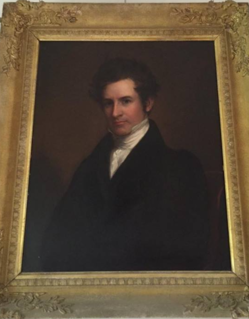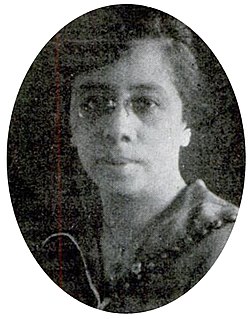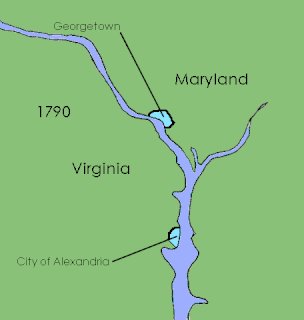This article relies largely or entirely on a single source .(September 2009) |
The Association of the Oldest Inhabitants of the District of Columbia (AOI) is the oldest civic organization in Washington, D.C., representing long-term citizens of the city. The association is dedicated to the District's history and heritage as well as promoting ideas to improve the future of Washington for its residents.

Washington, D.C., formally the District of Columbia and commonly referred to as Washington or D.C., is the capital of the United States. Founded after the American Revolution as the seat of government of the newly independent country, Washington was named after George Washington, first President of the United States and Founding Father. As the seat of the United States federal government and several international organizations, Washington is an important world political capital. The city is also one of the most visited cities in the world, with more than 20 million tourists annually.
It was founded by a number of the District's earliest residents, including Benjamin Ogle Tayloe, Peter Force and J. Carroll Brent together with 28 other prominent Washingtonians, on December 7, 1865 — a time of great changes to the city and its population following the American Civil War. The AOI predates the merger of the District of Columbia's separate political entities into a single government (see Washington County, D.C.). Originally members had to be at least 50 years old and have resided in the District for 40 years. Currently, AOI members must be at least 40 years old and must have lived, worked, or operated a business in the District for at least 20 years or be descended from someone who meets these qualifications. Persons not meeting these qualifications may become Associate Members (all privileges except cannot hold office).

Benjamin "Ogle" Tayloe was an American businessman, bon vivant, diplomat, and influential political activist in Washington, D.C. during the first half of the 19th century. Although he never held elective office, he was a prominent Whig and influential in presidential electoral politics in the 1840s and 1850s. His home, the Tayloe House, became a salon for politically powerful people in the federal government and socially influential individuals in the United States and abroad. Tayloe was also a party in the important 1869 contract law case, Willard v. Tayloe, 75 U.S. 557.

The American Civil War was a war fought in the United States from 1861 to 1865, between the North and the South. The Civil War is the most studied and written about episode in U.S. history. Primarily as a result of the long-standing controversy over the enslavement of black people, war broke out in April 1861 when secessionist forces attacked Fort Sumter in South Carolina shortly after Abraham Lincoln had been inaugurated as the President of the United States. The loyalists of the Union in the North proclaimed support for the Constitution. They faced secessionists of the Confederate States in the South, who advocated for states' rights to uphold slavery.

The County of Washington was one of five original political entities within the District of Columbia, the capital of the United States. Formed by the Organic Act of 1801 from parts of Montgomery and Prince George's County, Maryland, Washington County referred to all unincorporated parts of the District of Columbia "on the east side of the Potomac, together with the islands therein." The bed of the Potomac River was considered to be part of Washington County as well.
The association became incorporated in 1903. The AOI met in the Old Union Engine House at 19th and H Streets, N.W., from 1911 to 1956, when the House was demolished. Over the years the AOI has supported many important civic initiatives including construction of the District Building, the installation of modern city street lighting, and the adoption of Washington's flag in 1938. The AOI opposed a new flag design in 2002. In support of both the L'Enfant and McMillan Plans, they have campaigned for the reopening of closed streets, including Pennsylvania Avenue in front of the White House and provide testimony at planning hearings when either of the major plans are threatened. On January 29, 2005, a statue of Alexander Robey Shepherd (territorial governor from 1873 to 1874) was returned to downtown Washington due to the association's efforts. The AOI commissioned a biographical, commemorative plaque that was placed at the base of the statue (located on the NE corner of the John A. Wilson (District) Building) in November 2010.

The flag of Washington, D.C. consists of three red stars above two red bars on a white background. It is an armorial banner based on the design of the coat of arms of George Washington, first used to identify the family in the 12th century, when one of George Washington's ancestors took possession of Washington Old Hall, County Durham, northeast England. As elements in heraldry, the stars are properly called mullets.

The White House is the official residence and workplace of the President of the United States. It is located at 1600 Pennsylvania Avenue NW in Washington, D.C. and has been the residence of every U.S. President since John Adams in 1800. The term "White House" is often used as a metonym for the president and his advisers.

Alexander Robey Shepherd, better known as Boss Shepherd, was one of the most controversial and influential civic leaders in the history of Washington, D.C., and one of the most powerful big-city political bosses of the Gilded Age. He was head of the DC Board of Public Works from 1871 to 1873 and Governor of the District of Columbia from 1873 to 1874. He is known, particularly in Washington, as "The Father of Modern Washington."
On July 4, 1920, the AOI invited members of a parallel African-American organization, The Association of the Oldest Inhabitants (Colored), Incorporated to a joint meeting to recognize the District of Columbia's fallen veterans of the Great War (1917-1918, World War I). While the AOI (Colored), Inc., was incorporated in 1914 and remained an active, vibrant organization well into the 1970s. After a campaign, assisted by the "Washington Post's" John Kelly, 20 years of the AOI Colored's more recent records were serendipitously located by DC author/historian James Goode while conduction research for a book. While interviewing the former owner of a house in the Palisades neighborhood of the District of Columbia he discovered that her grandfather, William D. Nixon, had been the President of the "Oldest Inhabitants, Incorporated" (the organization's preferred name over "The Association of the Oldest Inhabitants (Colored)" from 1942 until 1962. With the assistance of AOI Historian Nelson Rimensnyder and President Bill Brown, William Nixon's descendants worked with archivists at Howard University's Moorland-Spingarn Library where the records were digitized and copies provided back to Mr. Nixon's family members. While the majority of the organization's records (1914 through 1942) are believed lost, the current AOI's efforts to preserve the records of their parallel, African American organization were partially successful.














